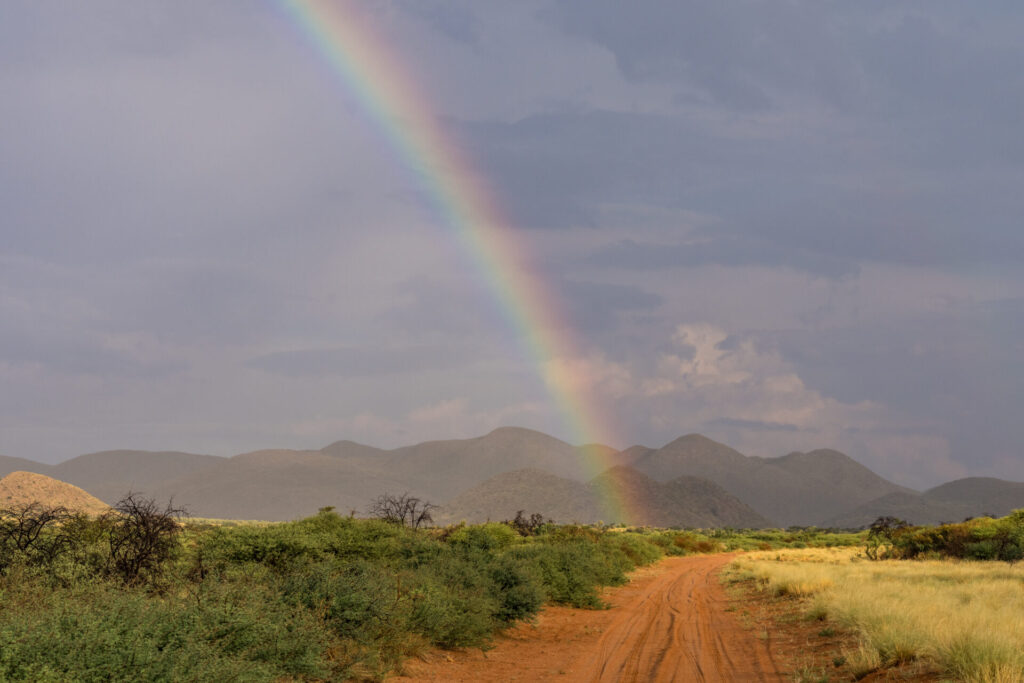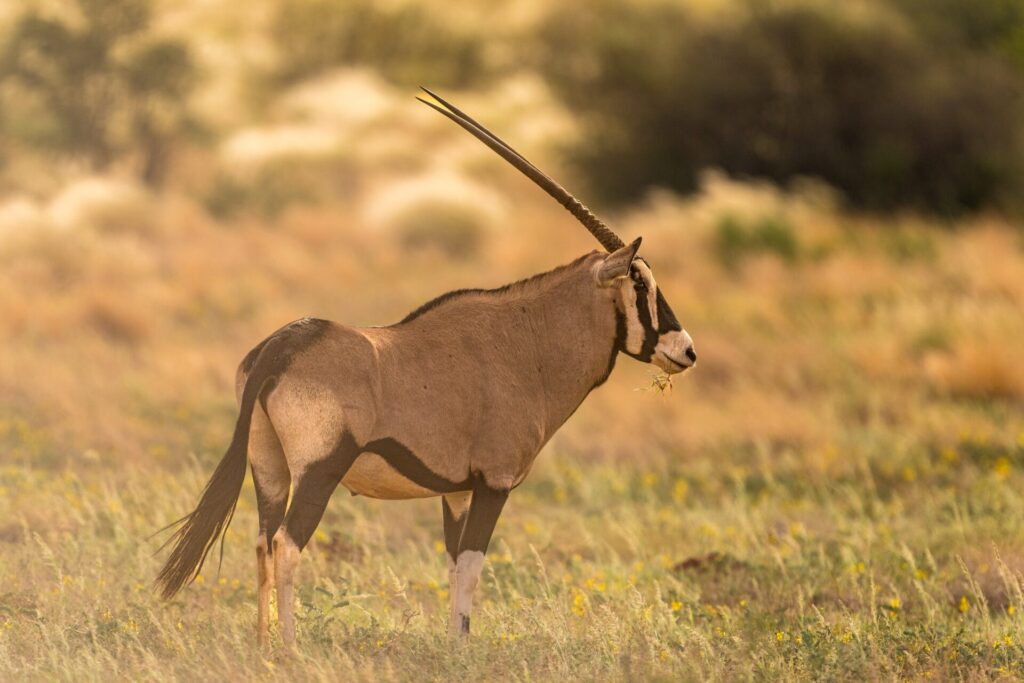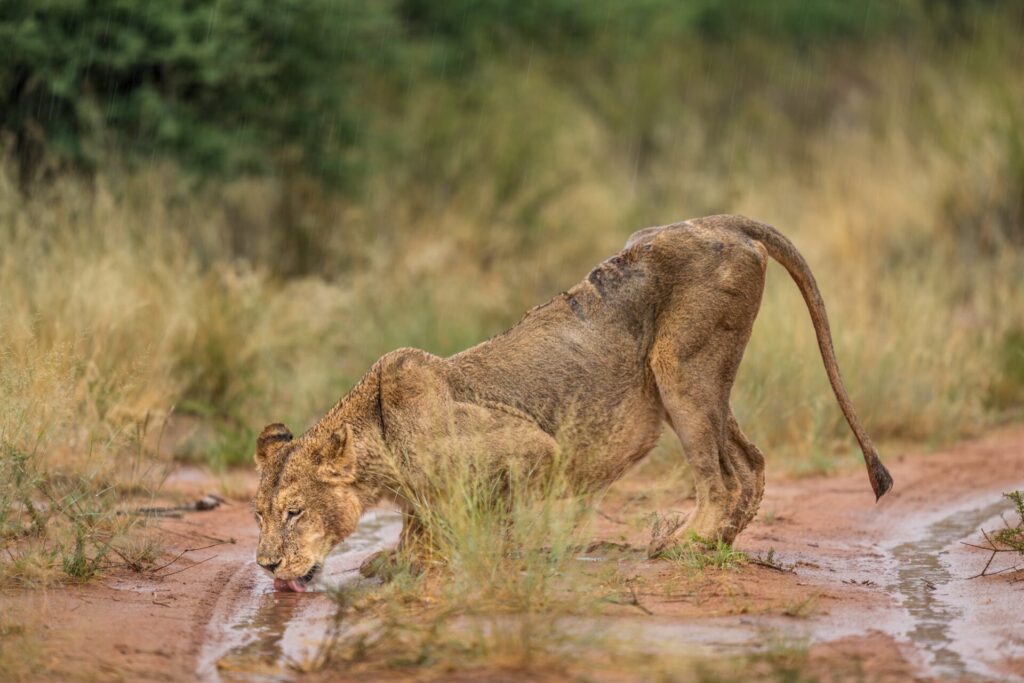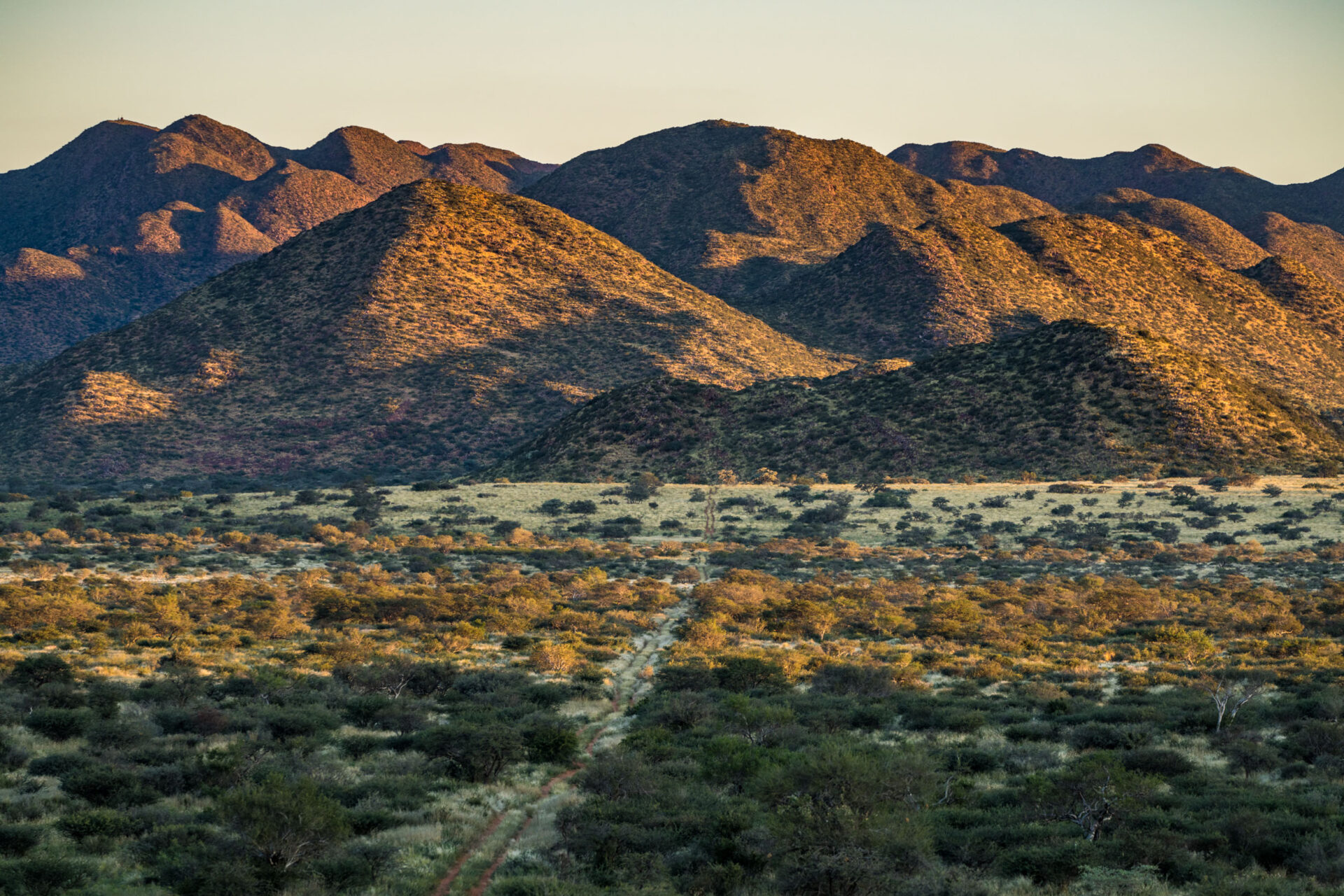What makes Tswalu unique
An ecosystem unlike any other you may have encountered
Understanding the Kalahari ecosystem is fundamental to appreciating what makes Tswalu different from other safari destinations. This landscape shapes everything you’ll experience here, from the wildlife you encounter to the way we approach conservation.
Tswalu sits on the southernmost edge of the Kalahari, in a transition zone between the true Kalahari ecotype and arid savannah. This is why we refer to it as semi-arid rather than desert – an important distinction. The area receives seasonal rainfall, particularly during summer months from October to April, supporting a diversity of grasses, shrubs and trees adapted to little water and extreme temperatures.
The Korannaberg mountains run through the reserve from north to south, and their presence has created greater habitat diversity than anywhere else in the Kalahari. Five distinct vegetation types form a mosaic across the landscape: bushveld, plains and mountain shrubveld, duneveld, and calcrete scrubveld. Each habitat responds differently to seasonal changes and provides specific shelter and food resources for different species.

Rain is often localised here. Due to the vastness of the reserve, certain areas may receive more rain and appear greener than others at any given time. This pattern of feast and famine is central to how the ecosystem functions. When rain does come, it triggers remarkable responses. Grasses flourish, wildflowers bloom, and these changes ripple through the system in ways both visible and subtle, from butterfly migrations to the influences on the sex ratios of animals, including giraffe and rhino calves.
At its heart, Tswalu is a restoration project, allowing former farmland to recover naturally while protecting biodiversity and securing habitat for wildlife to thrive. Indigenous species have been reintroduced across a landscape that now spans almost 1,200 square kilometres – South Africa’s largest privately protected conservation area.

Ongoing regenerative conservation is guided by research and long-term monitoring that helps us understand how this ecosystem responds to management interventions and environmental changes. Semi-arid ecosystems naturally support lower densities of wildlife compared to wetter savannah regions.
This applies particularly to large predators. The Kalahari lions, cheetah, wild dogs and other predators you may see here have adapted to these conditions over millennia. What this means for your safari experience is that wildlife sightings carry genuine rarity and significance.

The size of the reserve, combined with low guest numbers and private vehicle use, means you’ll have space and time to absorb the subtleties of this landscape. To notice the richness within the sparseness. To understand that what is remarkably diverse may, at first glance, appear deceptively homogenous.
This is the foundation for everything that follows: the predator-prey dynamics, the species adaptations, the complexity of life that exists above and below the sand, and the seasonal transformations that make the southern Kalahari such a compelling place to immerse yourself in nature.
